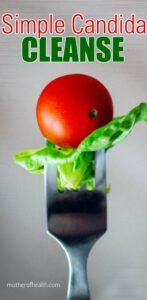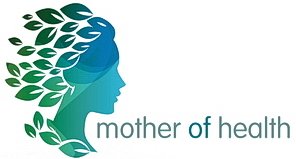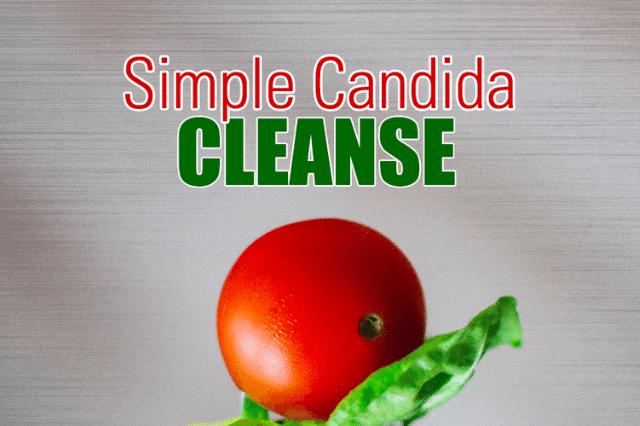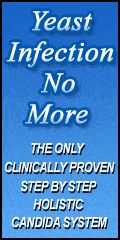Many people assume candida infection is a women's hygiene matter. But nothing could be further from the truth. Keep reading to learn more and the benefits of a simple Candida cleanse diet.
Candida overgrowth is a risk to everyone. When babies get diaper rash, very often it is candida. Candida can cause UTIs in men and women.
High levels of candida are common in people with IBS, Celica’s, and other gut digestive conditions. Candida infections can bring about reflux, mouth ulcers, gum disease, diverticulitis, and a whole host of other ailments.
What is Candida, and How Does it Cause This?
A key element to candida overgrowth is excess sugar
You must remember that candida is a living thing. And, like all living things, if you feed it, it will hang around.
Candida can eat a few things, but what it needs most of all is simple sugars.
Unfortunately, there are not a lot of other things in our guts that eat simple sugars. So, when we have too much of these, the one thing we are feeding is candida. And the other things in your gut feed off the components of healthy foods, such as fiber and starch.
So, if you don't eat these, you aren't feeding your good bacteria. By starving our good bacteria and feeding our yeasts, we create imbalances inside us. And these imbalances, if we don't take control of them, extend all over our bodies.
Then the excess candida grows, starts to roam. And before you know it, you are very ill, suffering a large number of complaints, that all come down to a bad diet decision.
Fungus
What is more, candida has a sneaky little trick to keep itself fed.
Ever heard of the fungus that turns ants into zombies?
A fungus grows on an ant, then starts controlling it, making it run around the nest or climb a tree so the fungus spores get spread far and wide.
Here the fungus is in control and surviving via predation. What does this have to do with candida?
People with candida overgrowth have stronger cravings for carbs and simple sugars than in those without.
It is believed that on some level candida is able to trick our bodies into thinking its needs are our needs. It makes us crave, and eat, the simple sugars it needs to survive. Scary, huh?
Fortunately, this is completely reversible. If we starve our yeasts, feed our good bacteria, and remain consistent, we can regain that balance. And once our guts are rebalanced, it is only a matter of time before the rest of our bodies are also rebalanced.
Start the Simple Candida Cleanse off Right by Fasting
Starting a cleanse diet, the first thing you need to do is give your body as close to a blank slate as possible. This means fasting.
A fast stops food from passing through your digestive tract the easiest way: by not eating it.
This starves all our bacteria and yeasts, but gives you a better chance of succeeding when we begin the real diet. There are two ways of fasting for a candida cleanse. One is a water fast. The other is a ketogenic fast.
A water fast is where you consume nothing but water. This fast can be difficult. But, if you are a healthy weight or overweight and have no other illnesses, then a one to three-day water fast is a great start to your diet. Make sure to take multivitamins and to drink enough fluids. Water, black coffee, and black tea are acceptable, but nothing sweetened or with any calories at all.
If your health is not good, a simple way of starting your cleanse diet is a ketogenic fast. This is where you are getting enough calories from fats and proteins to nourish you, but you are not eating fiber or carbohydrates for three to eight days. Eggs, fish, meats, and hard cheeses are allowed. Everything else is off the menu.
You will probably find your fast the hardest part of your diet. And you will most likely feel starved for carbs and sugars. This isn't because you need them. You can go without sugar your whole life. This craving is because the candida is starving, and is trying to get you to feed it. When the 3-8 days are up, or when your cravings stop, whichever comes first, you are ready to start your diet.
Feed Your Gut the Right Nourishment
Your gut has certain needs that you have to meet to feed it properly.
Fiber is probably the most important need.
Fiber is the only source of energy for most of the best bacteria in our gut. If they have been starving, we need to eat a lot of it. Choose high-fiber, low-calorie foods as the bulk of your plate. A huge cabbage stew as a base or a large green salad is the perfect starting point.
Resistant Starch is Also Essential to Nourishing Good Bacteria
Resistant starch is when we cook and cool starches, like rice, potatoes, and pasta. Cold starch is hard for us to digest, so we do not extract simple sugars from it. Which means it passes untouched to our guts, where it feeds our bacteria.
On the flip side, simple starches and hot starches are basically sugars. Our stomach acids and enzymes digest simple, warm starch into sugars, which would feed our candida. You do not want to eat any hot starches during this diet. All simple sugars, including those found in fruit, are out too.
Another thing to avoid during this reset is excess fats. Even during your ketogenic fast, if you choose to do one, you do not want to eat so much fat that it is not absorbed. This is because unabsorbed fat will line your gut and make it hard for your gut bacteria to fight for their lives.
Finally, to ensure your gut gets the best possible start, you want to eat fermented foods. Fermented foods are essential to a healthy gut. One or two small servings a day of pickles, cheeses, cured meats, or wine, will give your gut bacteria a helping hand digesting their meals.
A Simple Candida Cleanse Diet
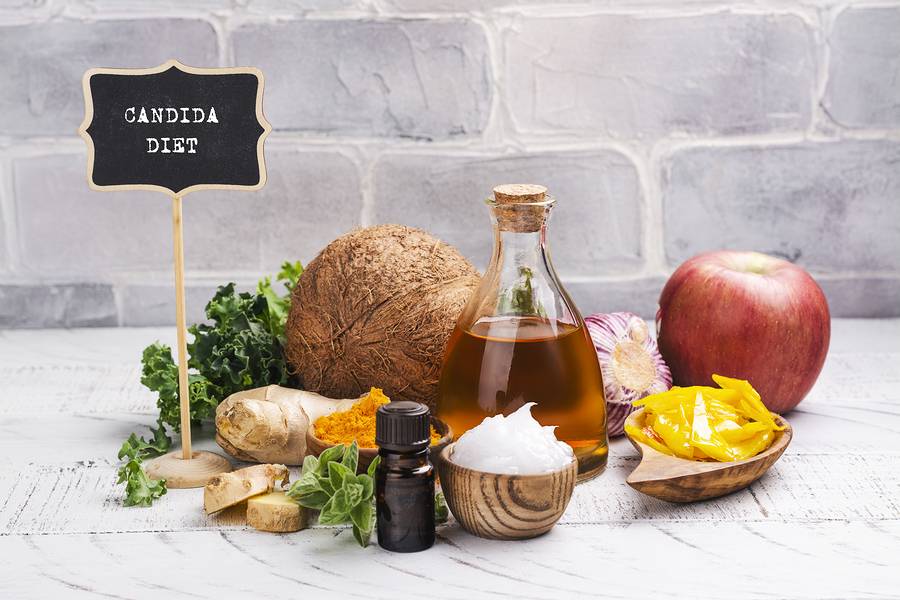
The basic profile of every meal on your cleanse diet should be:
-
80% low-calorie fibrous plants
-
15% fats and proteins
-
5% fermented foods
A sample day following the early cleanse diet would be:
Breakfast: a large bed of fried cabbage with two eggs and a small portion of meat protein. Pickle on the side.
Snack: some cheese.
Lunch: a huge green salad with celery, cucumber, zucchini, and steamed cauliflower, topped with chicken and pickles.
Snack: a handful of walnuts.
Dinner: a large stew full of low carb vegetables, with a 150ml glass of wine on the side.
This part of your diet will last until you reduce your carb cravings to only psychological, or gone entirely.
A physical craving will cause hunger pangs, almost a sore jaw, lethargy, headaches, nausea, etc. This is the candida working. A psychological craving is that feeling you get where you “could really go for” some carby foods. You miss them, but you are not in a physical state of suffering.
You need to pass that first stage and move onto the second one before you can progress onto reintegration.
So, the reintegration diet is a stepping stone between your initial cleanse diet and your maintenance diet.
Example day:
Following a cleanse diet if you have health concerns
Maintenance Diet to Keep Control of Candida
So now that your candida levels are back down to normal, you're feeling better, your digestive complaints, ulcers, or itching have gone… what next?
Naturally, if you go back to your old diet you will be feeding your candida again, which will cause the same problems again. But it isn't fair to suggest a meal plan as restricted as the cleanse one. Instead, I will leave you with a candida-controlling food-pyramid, so you know what to eat to stay in charge, while still having the flexibility to enjoy your life.

Some people may not have heard of Candida, but the ones who do know can tell you the symptoms of this condition can easily be mistaken for an upset stomach, an allergic reaction or simple exhaustion.
Unfortunately, if left unattended, candidiasis or infection brought about by the fungus can cause serious damage to your body.
The good news is candida, in its early stages, may not necessarily mean a trip to the doctor. For the most part, changing your diet can be quite effective in combating the effects if caught early on.
